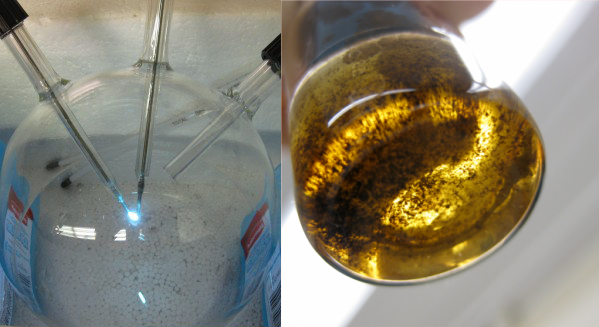-
Researchers Cook Up Chemical Reactions in Primordial Soup
July 02, 2019 / Written by: News Wise
Left: Spark in Miller-Urey apparatus. Right: Reaction involving the complex organics from a Miller-Urey experiment with a nitrogen heterocycle. Credit: Karen Smith / Boise State UniversityNewswise — In the 1950s, when chemist Stanley Miller created the experiment that would eventually bear his name – the Miller-Urey experiment – he was trying to simulate conditions of early Earth. In a glass sphere filled with methane, water vapor, ammonia and hydrogen (representing Earth’s early atmosphere), electrodes sparked to simulate lightening and the apparatus alternately heated and cooled its contents. After one week, a jet black solution formed. From this complex primordial soup, Miller made an incredible discovery: the solution that he collected contained multiple amino acids – the building blocks of proteins.
While there has been significant progress made towards understanding the origin of life since Miller’s landmark experiment, many studies have utilized experiments involving isolated reactions, favorable reaction conditions and a deft hand in the laboratory. Yet how the building blocks of life arose in the complex environments thought to be prevalent on early Earth is still a mystery.
Read the full article on News Wise.
Read the full report here: https://www.nature.com/articles/s41598-019-45310-z
Source: [Boise State University]
- The NASA Astrobiology Institute Concludes Its 20-year Tenure
- Global Geomorphologic Map of Titan
- Molecular Cousins Discovered on Titan
- Interdisciplinary Consortia for Astrobiology Research (ICAR)
- The NASA Astrobiology Science Forum Talks Now on YouTube
- The NASA Astrobiology Science Forum: The Origin, Evolution, Distribution and Future of Astrobiology
- Alternative Earths
- Drilling for Rock-Powered Life
- Imagining a Living Universe
- Workshops Without Walls: Astrovirology